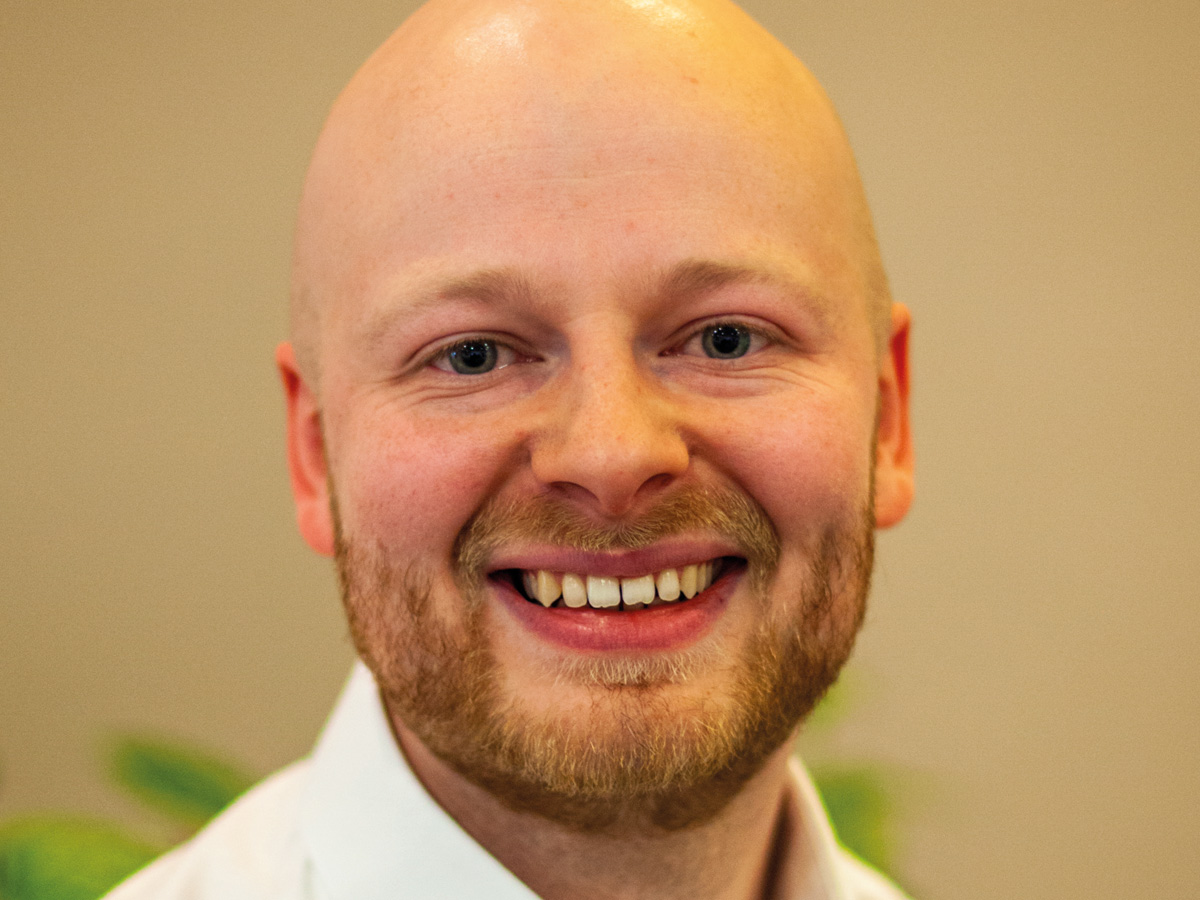What is the Esmée Fairbairn Foundation’s approach to impact investing?
We start from a base of how we can use our investment for our mission. We are a mission-aligned investor. We focus on three impact areas: our natural world; a fairer future; and creative, confident communities.
The way we think about how our capital is used is increasingly referred to as the “spectrum of capital”. This frames how we can shape investment to deliver on different mandates and each one is a tool in our toolkit to support our strategy.
We have our grant funding on one side, and then as we work across the spectrum, we have our social investment allocation, which is our impact-first investing, where we start with what impact is needed to progress our three aims.
Next, we have impact investing. We think thematically here. We are taking the mission-aligned impact-first investment strategies and deep diving into themes that can generate a compelling return, driven by impact.
There are so many exciting themes here, from food systems, to circularity, to nature finance. We are using impact investing to test the potential to achieve market-like returns.
Then we move across to our enhanced sustainability allocation. That is what are, for us, the best-in-class sustainability funds, stemming from our investment policy statement.
Is sticking to those three impact aims restrictive or does it give you a point of focus?
As we go across the spectrum of capital, we think about what is complementary or aligned to our impact aims so that our capital works in the same direction, but the outcomes will be less specific to our detailed impact priorities than our grant funding and impact-first investing.
So, our impact themes naturally broaden, but remain aligned. Also, we can expand our pipeline beyond the UK as we move across the spectrum.
In fact, I would argue that the in-depth expertise in the impact areas gives us an edge for traditional portfolio building, understanding opportunities and risk as we transition to sustainability. When we think about our impact-first investing, it is closely aligned with the foundation’s impact roadmap, working in tandem with our grant funding.
For example, within our natural world impact area we have nature-friendly farming as a goal. Through our impact-first investment allocation we have invested in Ooooby, a technology that connects local farms and food hubs directly to homes.
Then, through our impact investing, we build out, deep diving into compelling investing opportunities that create an ethical and sustainable food system, from sustainable farming practices to novel food production technologies.
How much of your assets are allocated to social and impact investments?
Our impact-first social investment allocation is £60m, and our impact investment allocation is an experimental £10m. The enhanced sustainability allocation is targeting 5% of the main portfolio, and the recently re-written investment policy statement has a dual mandate for our target return and a transition to sustainability.
Are you looking to increase those impact and social allocations?
It’s worth being clear that just because we have an impact carve out, it doesn’t mean the rest of the endowment is not doing impactful work. We are in some exciting impact funds. We have just increased our impact-first allocation and the impact investment allocation is still deploying and driving our new thematic strategy. So, watch this space.
You have touched on the importance of social and impact investment, but could you expand on its importance to the organisation?
There are three elements for us. The first, as I have mentioned, is that they are tools in our toolkit to deliver our strategy. The second, is a more holistic view: what total impact are we having as a foundation? So, thinking about the impact of the whole of our portfolio as well as our grant funding.
Third, is more outward looking. This is thinking about the financial system and our role in that system as an asset owner. Innovating to solve huge planetary and social issues, internalising externalities and creating a more sustainable and equal financial system – investment has a huge role to play.
At Esmée we want to share what we are doing. We may be small, but we can be the first mover in something to test it out, with the ambition that others will follow.
How does impact-first and impact investing fit into Esmée Fairbairn’s overall ESG approach, as it seems closely knit?
We don’t use the phrase “ESG” too much. Albeit, we do have an ESG framework that we work closely with our advisers on. Social and impact investing allows us to do some of the innovative work that then passes up the spectrum of capital.
It seems that traditionally social and impact investing has been low down the priority list for institutional investors. Has that been the case and what do you attribute this to?
Traditionally that is right. Impact investing is perceived to be concessionary. It is critical that we understand the distinction between an impact-first strategy that does not target competitive financial returns, and impact investing where impact can be a driver for performance.
Addressing the first, labelling impact-first social investing as “concessionary” is a major under-sell. It can be concessionary on a financial risk/return basis, but looking holistically across impact, financial return and risk, it is not concessionary at all.
It is about what you are optimising for, and what it can catalyse. It sounds pedantic, but language matters here. Impact investing has at times been wrongly lumped in with impact-first strategies.
It is a misunderstanding that many managers labelling their fund as ‘impact’ are likely to be able to share plenty of stories on. Many impact strategies are set to, in my view, outperform the market. There is a growing evidence base for this.
Do investors sometimes fail to take a long-term view on social and impact investing?
That is where the type of investor matters. Different investors have different mandates.
It is not only long-term investors like ourselves that have to think about the climate risks that will materially impact portfolios. And investors across all mandates have the ability to unlock significant [share-holder and wider stakeholder] value now with an impact-orientated approach.
You have alluded to it, but it seems that social and impact investing is becoming more important to institutional investors: why is that and what’s driving it?
Like anything in the investment sector it needs a track record. That is developing now. There are earlier movers now building up 10-plus years of strong experience, which is starting to turn the heads of larger chunks of capital, with something they can back.
Add that to the severity and immediacy of problems around us that capital has a role in. It is hard not to have a conversation about the fact that climate issues are here and now, and inequality is going in the wrong direction. Capital has a critical role.
As one example, Esmée co-funded a piece of work with the Green Finance Institute, the Bank of England, Defra and others to quantify the potential loss to the UK economy from nature degradation. That drives not only risk management, but also presents the question of what opportunities there are to invest in nature restoration.
In which areas of social and impact investment would you like to see more institutional investment going into and why?
There are so many. Investors can be intentional and measure their impact across every asset class. It is a framework to invest rather than a separate asset class. That said, we have a strong focus on ethical and sustainable food in the UK. It is an important example as the food system contributes 25% of global greenhouse gas emissions, 70% of freshwater use and 50% of habitable land use.
Globally, farming is the largest contributor to biodiversity loss. So, this one system is huge in terms of the impact that can be had and there is a significant journey to go on. That journey presents huge investment and impact opportunities.
Where are the gaping holes when it comes to the UK’s social and impact investment? How can these be filled?
One that immediately comes to mind are community-led approaches. We see incredible community leadership in our grant funding. But then, there is how that lifts into scaled real estate strategies. The underlying asset may well be the same, but the approach differs.
If you take a community-led approach for place-based investing, you are not only assessing the economics of the asset, but you are looking at say rent affordability, what assets the local communities want and need in that area, and how this contributes to wider community-led regeneration in that place.
A second that comes to mind is that we are seeing a lot of natural capital strategies, which is brilliant. Fund managers are jumping on this. But there is further to go in mitigating for impact risks here: from biodiversity to community wealth building, to the role of voluntary carbon markets and offsets. Addressing impact risks can unlock the opportunities and pull in more capital.
Sometimes though there seems to be a lack of trust between those involved in community initiatives and the investors wanting to supply the capital.
For me, the key is investing the time to build up partnerships to collaborate in places, to build trust so that the capital works to enable community-led change, rather than working against it, and share in the upside, rather than extract it.
Will the change in government be beneficial to social and impact investment?
While we work closely with public bodies we don’t do a great deal directly with central government.
Although, that said, I would love to have a government where we are working more closely going forward, aligned to the work from the BVCA, UKSIF, Green Finance Institute, Impact Investing Institute, Access Foundation and others.
You are also a trustee/adviser of some organisations. How does that feed into your work at Esmée Fairbairn?
In a positive way, I hope.
There is the advisory role on impact venture capital and private equity with the BVCA, and roles to practice what we preach around collaboration, such as my co-chair role in the Social Impact Investors Group, which is run by the Association of Charitable Foundations.
I also help a social enterprise and ventures’ work on their investment and financial strategies.
What are your social and impact investment ambitions at Esmée Fairbairn?
As a foundation we are on the right course: building on our track record in social investment to unlock a holistic thematic-led investment strategy; thinking about how we allocate by asset class and theme/impact class.
And there is the broader ecosystem work. This is how we work together with peers to create an impact-driven financial sector of the future. One that understands and measures its impact and actively works capital for people and planet.
What has been the biggest lesson of your career?
My whole career has been in finance. It’s important, as it is humbling, for me to understand that the financial system is a means, not an end, to what we want to create. It is not about that great venture deal that returned X, it is about the impact that the venture had on its customers and wider stakeholders.
Investment facilitates, but it’s not the end goal.





Comments